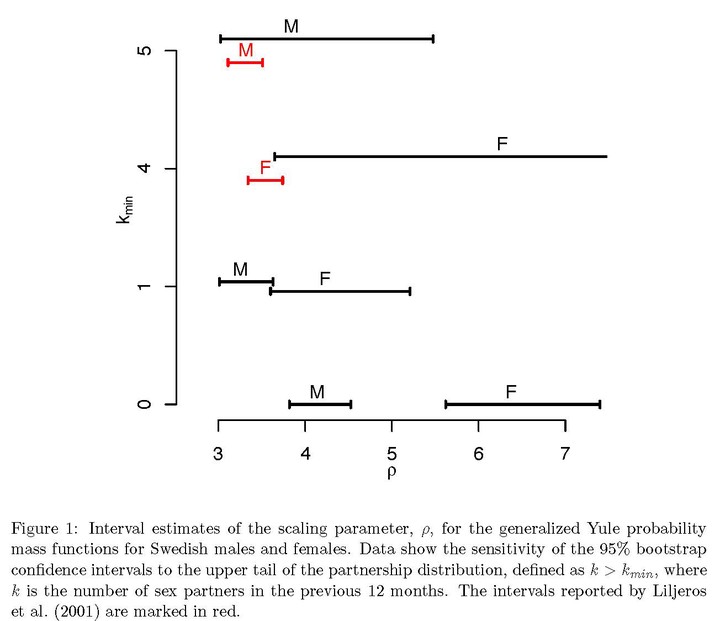On 'Sexual contacts and epidemic thresholds,' models and inference for Sexual partnership distributions

Abstract
Recent work has focused attention on statistical inference for the population distribution of the number of sexual partners based on survey data.
The characteristics of these distributions are of interest as components of mathematical models for the transmission dynamics of sexually-transmitted diseases (STDs). Such information can be used both to calibrate theoretical models, to make predictions for real populations, and as a tool for guiding public health policy.
Our previous work on this subject has developed likelihood-based statistical methods for inference that allow for low-dimensional, semi-parametric models. Inference has been based on several proposed stochastic process models for the formation of sexual partnership networks. We have also developed model selection criteria to choose between competing models, and assessed the fit of different models to three populations: Uganda, Sweden, and the USA. Throughout this work, we have emphasized the correct assessment of the uncertainty of the estimates based on the data analyzed. We have also widened the question of interest to the limitations of inferences from such data, and the utility of degree-based epidemiological models more generally.
In this paper we address further statistical issues that are important in this area, and a number of confusions that have arisen in interpreting our work. In particular, we consider the use of cumulative lifetime partner distributions, heaping and other issues raised by Liljeros et al. in a recent working paper.